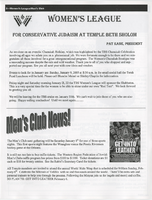Search the Special Collections and Archives Portal
Search Results
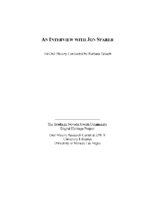
Transcript of interview with Jon Sparer by Barbara Tabach, March 4, 2015
Date
Archival Collection
Description
In this interview, Jon Sparer discusses his involvement as the architect of Congregation Ner Tamid's synagogue in Green Valley. He explains details of the building including the concrete tilt-up form, glass windows and the incorporation of quotes throughout the building. Sparer also discusses his involvement with the Gay and Lesbian Community Center of Southern Nevada (The Center) as a board member.
According to architect Jon Sparer, when he moved to Las Vegas in the early 1980s, the art of the deal was still based on a "handshake." It was just after the infamous MGM fire and Jon went to work for Rissman and Rissman. He later worked for Marnell Corrao Associates until 2001, and then as a principal in his own firm. He is now retired. While honing his design skills with the exciting transformation of the Strip into a world-class destination, Jon also became an active contributor to the Las Vegas community. Among his most notable experiences was being on the search committee for a new location for the fast growing Congregation Ner Tamid and then the architectural design for the synagogue's location in Henderson. It was a unique experience and Jon tells how he approached each aspect of the religious facility and how it would provide a memorable setting for life experiences. Jon has been involved with Jewish Family Services and the Anti-Defamation League (ADL). In addition, Jon along with his husband John Klai have been instrumental in the LGBTQ community and the opening of the Gay and Lesbian Community Center of Southern Nevada [The Center]. In this interview, he also talks about the significance of The Center/ and its success in working with the Clark County Health District, as well as providing a user-friendly experience for all who visit The Center and the Bronze Cafe located there.
Text
Wendell Bunker oral history interview
Identifier
Abstract
Oral history interview with Wendell Bunker on October of 1971 for the Ralph Roske Oral History Project on Early Las Vegas. Wendell Bunker (b. 1911 in St. Thomas, Nevada), discusses early Las Vegas, Nevada and the socio-economic changes that have taken place in the Valley. Bunker talks about the Boulder (Hoover) Dam and religion and education in Nevada. He also describes working for the Union Pacific Railroad and the importance of the railroad to the economic development of Las Vegas.
Archival Collection
John Brooks oral history interview
Identifier
Abstract
Oral history interview with John Brooks conducted by Jeff Kennedy on February 28, 1979 for the Ralph Roske ORal History Project on Early Las Vegas. During the interview Brooks discusses gaming, education, the early above-ground atomic blasts, the Boulder Dam, and social and environmental changes in Nevada. Brooks also discusses the Old Ranch, economic changes, religion, politics, family life, the Navy, sports, the railroad, Fremont Street, and the hotels on the Las Vegas, Nevada Strip.
Archival Collection
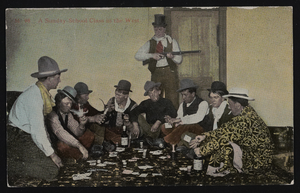
Postcard of teen boys smoking, drinking, and gambling, approximately 1900s-1980s
Date
Archival Collection
Description
Image

Transcript of interview with Irene Sprague Black by Chari Horne, March 16, 1978
Date
Archival Collection
Description
Text
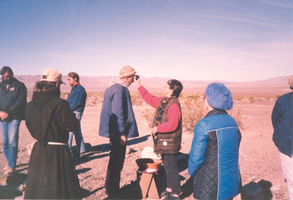
Protestor smudging ashes on other protestors' foreheads: photographic print
Date
Archival Collection
Description
Image
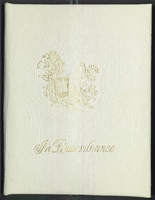
Mabel Hoggard: funeral guest book
Date
Archival Collection
Description
From the Mabel Hoggard Papers (MS-00565) -- Personal papers file. This funeral book from Palm Mortuaries and Memorial Parks, Las Vegas, is in memory of Mabel W. Hoggard. It contains religious quotes, poems, and signatures from family and friends. The book notes that services were held at Zion United Methodist Church.
Text
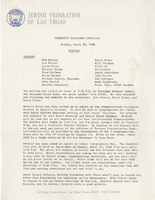
Jewish Federation correspondence, meeting minutes, and other records, item 17
Description
Community Relations Committee meeting mintues for the Jewish Federation of Las Vegas, Nevada, March 28, 1988.

